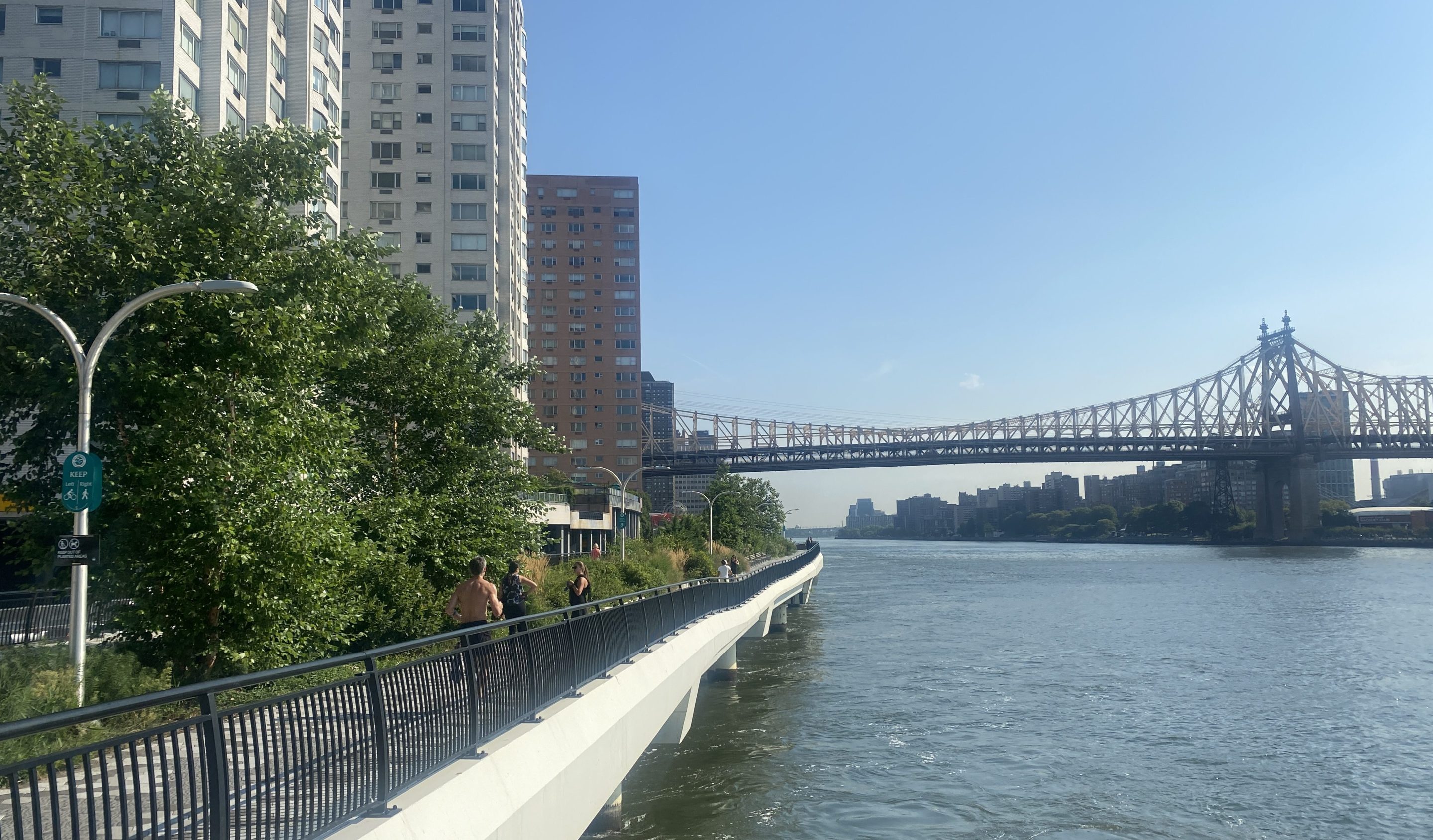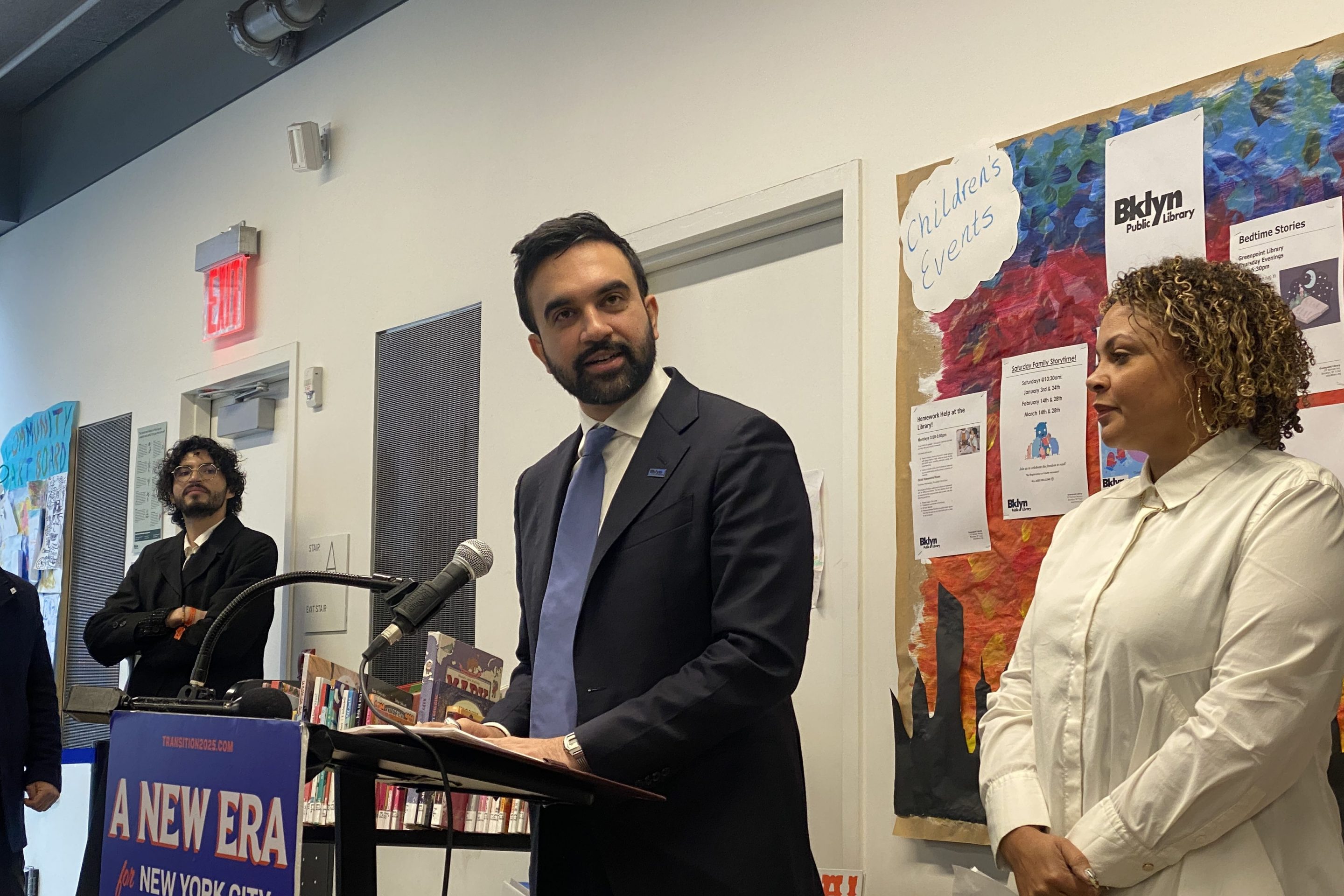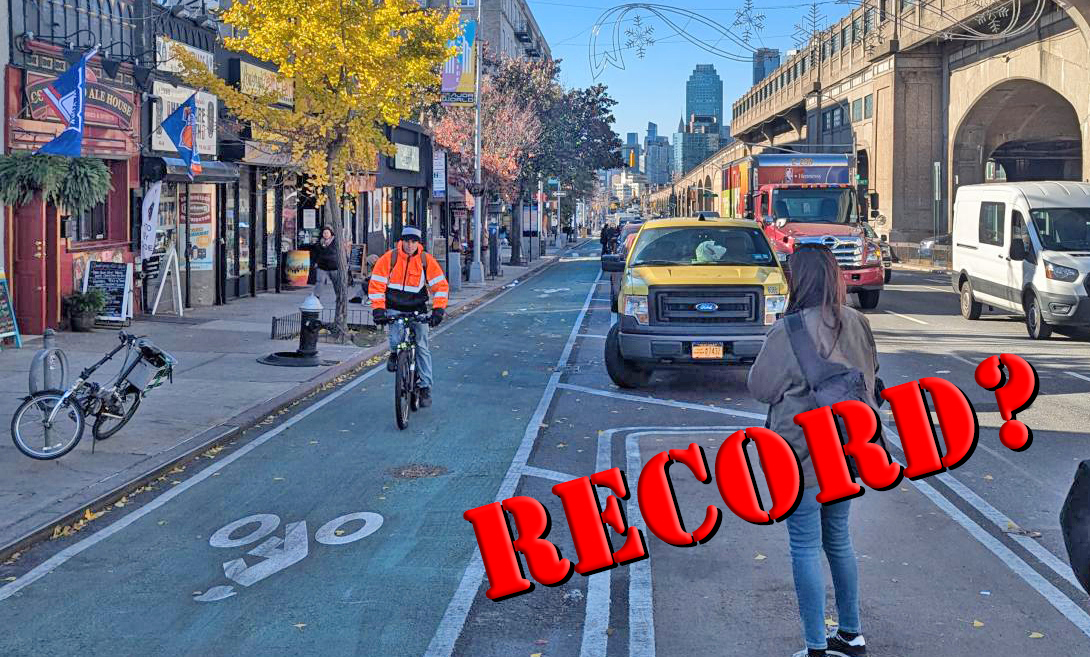The city on Wednesday released the first comprehensive greenways master plan in decades, a document that could provide a guide for an ambitious — and possibly next? — mayoral administration to stitch together a real network.
The "Greater Greenways" [PDF] plan lays out current and future projects to fill in gaps between all the green lines on the various maps of bike and pedestrian paths managed by multiple agencies. Now it's just up to a mayor that actually wants to do these plans to get to work, said one advocate and former city official.
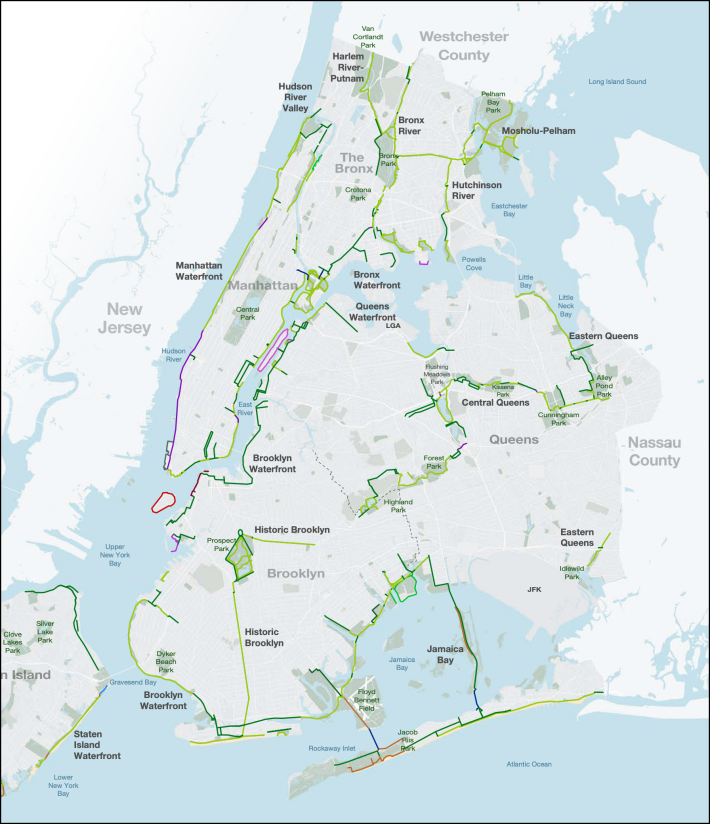
"An administration that’s not afraid to take on these issues can say, 'This is the plan and we’re doing it,'" said Jon Orcutt, who worked at the Department of Transportation in the Bloomberg and de Blasio administrations and now advocates with Bike New York. "We have a plan. Now you just need to figure out how you take each segment to the next step."
Mayor Adams has wishcast sprawling visions of new greenways across the Big Apple – without committing to clear deadlines or new funding. When it came to putting them in the ground, Hizzoner has often reverted to less ambitious on-street bike lanes, such as the ongoing work in the Bronx near the Harlem River.
The mayor has also notoriously abandoned any hope in fulfilling the Streets Master Plan, which came with actual legal benchmarks for new miles of protected bike and bus lanes each year, despite a promise to exceed the mandates while running for mayor.
Greenways are recreational and transportation arteries, but they take a long time to build. Many existing paths are in decrepit shape (here's just a half-dozen we documented two years ago). Different agencies manage different sections, but at 247 miles*, the largest operator is the Parks Department, an agency that remains chronically underfunded, flying in the face Adams's promise on the campaign trail increase its budget.
The Department of Transportation oversees another 189* miles, while a remaining 70* miles belong to a mix of other agencies, authorities, or sit on private land.
"To improve our facilities, we have to understand exactly how they are working today. This plan is a detailed look at the strengths and weaknesses of our current network," Parks Commissioner Iris Rodriguez-Rosa said at a press conference at the Midtown Greenway on Wednesday morning.
The location of Wednesday's presser was telling: the repurposing of a former temporary roadway next to the FDR Drive into a scenic maritime path opened in late 2023, though it dated back to the Bloomberg administration and cost a cool $217 million for just eight blocks. Oh, and it still doesn't close the gap along that section of Manhattan's East Side.
The new master plan puts all the existing pieces and future capital expansion work into one place, as required by a 2022 law penned by Manhattan Council Member Carlina Rivera. DOT and Parks must update the plan annually, although it was off to a rough start, given that it's more than eight months late. DOT also released interactive version with maps and status updates on a website.
The review re-hashes a set of "early action corridors" that Adams talked about two years ago: one wrapping around the Bronx coast, the west and north Queens waterfront, southern Queens near Kennedy Airport, Brooklyn's parkways, and Staten Island's North Shore. The city will release a plan for each of those sections by 2028, funded by $7.25 million in federal transportation money, but it's unclear when they'll become a reality.
There's also a fantasy map of new large-scale connectors across each of the five boroughs, such as east-west routes in Manhattan, the Bronx, and southern Brooklyn, a connector between the Western Queens and Southern Queens waterfronts, and a path down the spine of Staten Island.
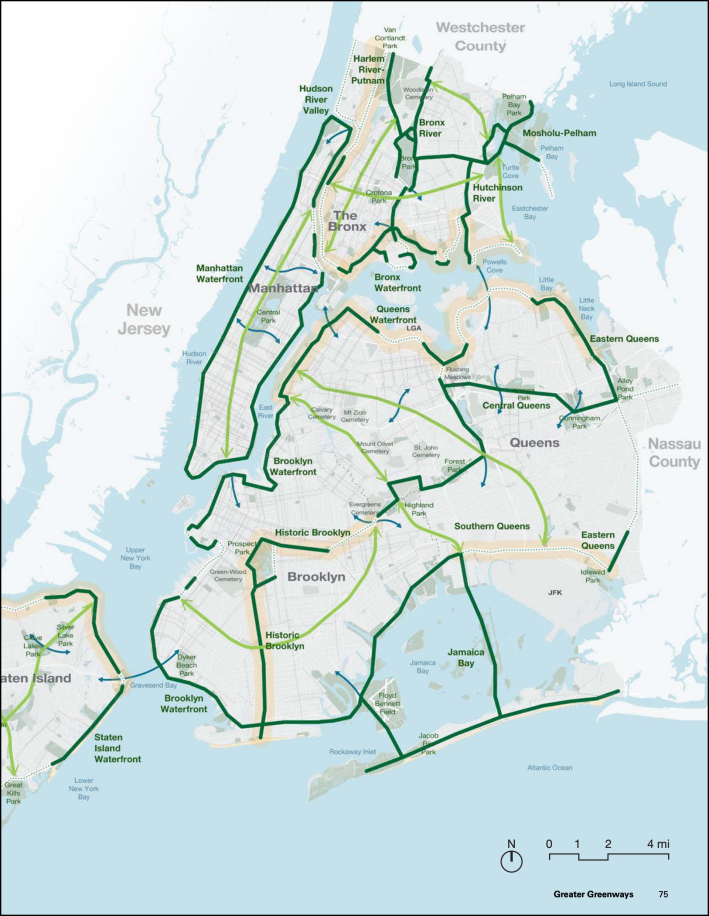
It's crucial to build the network out beyond just paint and plastic, and quickly build them out to hard barriers and greenery, said one leading greenway booster.
"I would definitely want there to be a more full-throated support and identification and the need for infrastructure protection for greenways, so we have more than just a system of green paint and plastic sticks that are being called greenways for many years," said Hunter Armstrong, co-chair of NYC Greenways Coalition and executive director of Brooklyn Greenway Initiative.
"The green-painted lines, that’s not our greenway, that’s not done," Armstrong added. "And if it’s temporary, that needs to be short term."
* City officials count greenway mileage by doubling them to reflect both directions of travel. And the city's definition of greenways includes a wide range of infrastructure, from high-quality off-street bike and pedestrian esplanades, to park drives and painted bike lanes with little more than a bit of paint and plastic sticks to keep out cars.
The new greenway plan is a great thing - @nyc-dot.bsky.social staff did a nice jobBUT multiple maps showing a greenway *thru* Coney Island 🤔Could be legalese about "defined" greenways, but generations have awaited the city actually doing a greenway on the multi-lane hellhole AKA Neptune Ave
— Bike New York (@bikenewyork.bsky.social) 2025-08-14T14:49:58.847Z
